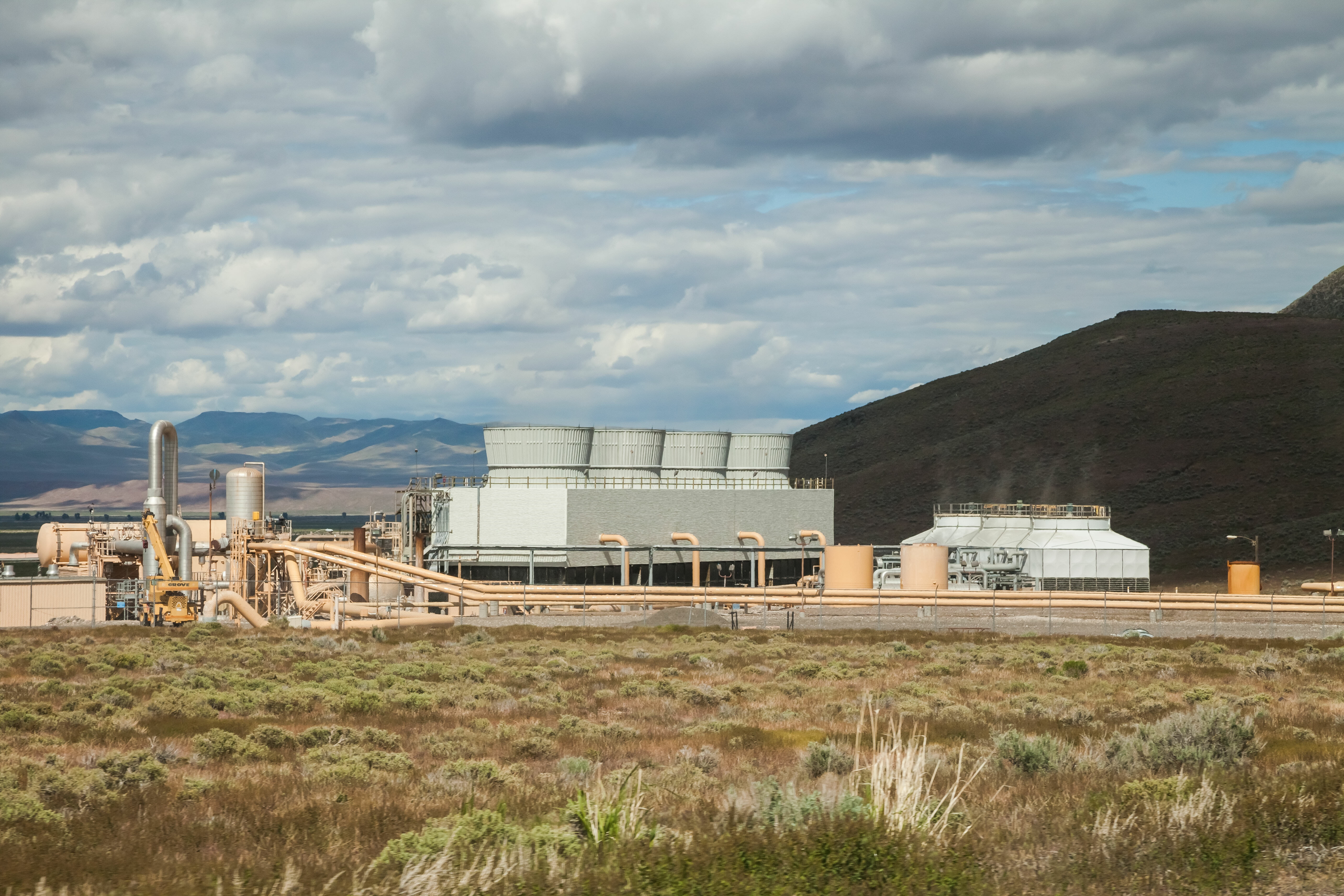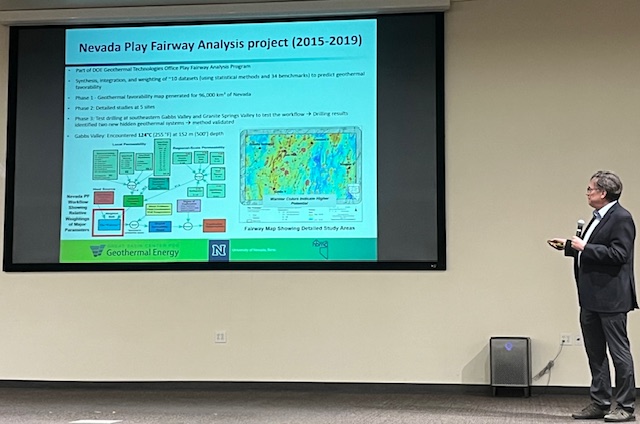Tapping into the heat beneath Nevadans’ feet

Good morning, and welcome to the Indy Environment newsletter. I'm Amy Alonzo, the environment reporter for The Indy.
I turn the lights off religiously when I’m leaving a room. I keep the thermostat turned down in the winter and up in the summer.
But no matter how hard I try to reduce my energy consumption, I know I use a lot of electricity — if nothing else, the computer I’m writing this on is powered up at least 40 hours a week. And if I’ve learned anything in this job, it’s that even the cleanest, greenest energies still come with a host of challenges.
Solar fields can destroy prime desert tortoise habitat. Some lithium mines threaten endangered species.
Scientists are hoping geothermal energy, something Nevada has in abundance, could finally provide a power source we can feel good about.
As always, we want to hear from readers. Let us know what you’re seeing on the ground and how policies are affecting you. Email tips to me at [email protected]. To get this newsletter in your inbox, subscribe here.
With highly fractured, permeable ground, the Great Basin’s geology makes it one of the most geothermally rich areas in the world. Hot fluid rises easily toward the surface, ideal for driving power plants, and present-day Nevada is the second-largest producer of geothermal energy in the nation behind California.
Tapping into hot fluids below the ground to spin turbines in power plants that generate electricity and boasting a lower carbon footprint than many other power sources, geothermal accounts for about 9 percent of energy generated in Nevada. But that number could be much higher, scientists say. The Silver State could produce about 30 gigawatts (GW) of geothermal power — about 30 times more than it does now.
“We truly live in a classic geothermal province, one of the largest on Earth,” said Jim Faulds, state geologist and member of UNR’s Great Basin Center for Geothermal Energy, at a geothermal symposium hosted earlier this month at the university.
Established in 2000 and funded by the U.S. Department of Energy (DOE), the center aims to accelerate discoveries of commercially viable hidden geothermal systems in the Great Basin while reducing exploration and development risks.
The takeaway from the symposium’s panel of geothermal producers? Renewable energy developers are looking to the state to be an even larger player in the geothermal energy market.
“Nevada is uniquely well positioned in the world with geothermal,” said Kerry Rohrmeier, government affairs manager for Ormat Technologies, an international company based in Reno.
The DOE estimates the nation needs between 700 and 900 GW of clean power by 2050 for a decarbonized economy, and geothermal has the potential to account for nearly 10 percent of that.
The United States has the most installed geothermal capacity in the world, generating 3.7 gigawatts of geothermal power at plants across the West, including more than two dozen in Nevada. Yet geothermal accounts for just 0.4 percent of the nation’s overall electricity.
The production of geothermal energy has taken off in fits and starts because it’s not as simple as putting up a solar panel or wind turbine, Faulds said.
“The Earth is complicated. You think you have a decent resource, and it doesn’t pan out,” he said. “There’s those kinds of things that make geothermal a little bit slower than some other forms of renewable energy.”
But with a low carbon footprint and the ability to continuously produce energy, scientists and energy experts think it has the potential to be a game changer in the nation’s push for clean energy.
And Nevada, the state with the greatest geothermal resources in the nation, has the chance to lead that charge, according to scientists and geothermal energy producers. Recently, major power purchase agreements were signed between geothermal producers and entities such as the University of Utah, Google, Southern California Public Power Authority and NV Energy for geothermal energy produced in Nevada, with some contracts extending as long as 40 years.
“We are now in a new wave of geothermal exploration,” said Cary Lindsey, geothermal research scientist with the Great Basin Center for Geothermal Energy.

The heat beneath our feet
Across the Great Basin, particularly in northwestern Nevada, the state’s crust is being pulled apart due to tectonic forces. That pulling motion results in the state’s land mass growing by roughly 2 acres per year.
That pulling of the crust is good for geothermal energy production, Faulds said.
“If the crust gets pulled apart, it gets thin, and you’re bringing hot mantle closer to the surface and you have a high geothermal gradient,” he said.
Geothermal power plants tap into those hot fluids below the ground to spin turbines in power plants that generate electricity. Power can be generated from fluids with temperatures higher than 194 degrees Fahrenheit.
Nevada has 27 geothermal plants, mostly in the northern portion of the state, that combined have the capacity to generate up to 827 megawatts of power at any given time, although many don’t operate at full capacity and only about half that amount is transferred to the grid. A megawatt is 1,000 kilowatts, enough to power as many as 800 households.
That number is likely to grow substantially.
The Nevada Division of Minerals has received more than three dozen permit applications for geothermal exploration so far this year, a number fluid minerals manager Dustin Holcomb calls “just bonkers.”
Revenue from geothermal in the state is increasing as well. The state collected $14.3 million in geothermal leases and royalties last year, up from slightly less than $10 million in 2022 and $8.5 million in 2021. All geothermal rentals and royalties are split 50/25/25 between the state, the generating county and the federal government.
The DOE is pouring substantial funding into geothermal research across the Great Basin. The focus is largely on enhanced geothermal, which often utilizes horizontal drilling and hydraulic fracturing technology developed by the oil and gas industry. This technology reaches heat in areas untappable by conventional geothermal plants, using drilling and hydraulic fracturing to allow fluid to move through hot rock that was previously impermeable.
The DOE has an enhanced geothermal test site in Utah — FORGE — focused on higher drilling speeds and decreased implementation costs. The technologies tested at FORGE are being utilized in Nevada at a project developed by Fervo Energy in partnership with Google and being used to power its data centers.
While the technology for enhanced geothermal continues to get fleshed out, the department is also focusing on conventional geothermal energy production.
UNR’s Great Basin Center for Geothermal Energy’s INGENIOUS project received $10 million in federal funding to map out and build a playbook for conventional geothermal energy production — geothermal that doesn’t rely on fracking.
The goal is to map geothermally favorable resources across the Great Basin and create a template for geothermal exploration, Faulds said. Nearly half of the region’s geothermal resources are hidden, meaning they have no above-ground outlet such as a hot spring, and they are often discovered by accident, Faulds said, during mineral exploration or while drilling an agricultural well.

The need for more data and environmental oversight
Geothermal isn’t a panacea though.
“Solar, wind, geothermal — they all have their own environmental impacts. Some are more well understood than others,” Jaina Moan, external affairs director for The Nature Conservancy’s Northern Nevada Field Office, said after the symposium. “There’s drawbacks to any technology we deploy.”
Historically, conventional geothermal exploration didn’t take surface expressions such as hot springs into consideration, as evidenced by the ongoing battle over a proposed geothermal plant in the Dixie Valley area that could threaten an endangered toad. Hot springs in the area are home to the endangered Dixie Valley toad, and a report by the U.S. Fish and Wildlife Service — the agency that listed the toad as endangered at the behest of the Center for Biological Diversity — found that operating a geothermal plant in the area would have significant impact in Dixie Valley by reducing or eliminating discharge into the wetlands.
But technology and science are increasing understanding of the Earth's subsurface, its complexity and the relationship between hydrology and geology and mitigating those issues, Faulds said, adding that creating a database documenting hot springs, nearby energy developments and ensuing environmental impacts — a database that is currently lacking — would benefit industry and conservationists alike and could help prevent environmental issues in the future.
But the federal government seems to be heading in the opposite direction.
Earlier this month, the Bureau of Land Management adopted categorical exclusions to expedite geothermal exploration permitting. If the agency determines an exploratory project meets exclusionary criteria, the exploratory project can bypass the National Environmental Policy Act (NEPA) and avoid drafting an environmental assessment for permitting exploration, although any subsequent development would require NEPA analysis.
The details of the exclusions have not been outlined by the Bureau of Land Management and is a confusing approach to policy making, Patrick Donnelly, Great Basin director for the Center for Biological Diversity, said in a call with The Nevada Independent.
“Why would you issue these categorical exclusions without sharing what they are?” he asked. “Without having seen the exclusions, we don’t know if there’s an issue or not … but how are we to know?”
And ultimately, much of the renewable energy produced in the Silver State is exported across state lines, according to Faulds.
This exporting of geothermal power means that Nevada’s landscape — yet again — bears the brunt of clean energy generation while reaping just a fraction of the benefits.
This story was updated at 10:17 a.m. 4/25/24 to correct that Nevada receives 9 percent of its power from geothermal sources, not 4 percent.
Here’s what else I’m reading this week:
Construction of a $10 billion transmission line through the Southwest can continue, a federal judge ruled, despite objections from tribes, archaeologists and environmentalists. More from PBS NewsHour.
In a piece for The Nevada Independent, Daniel Rothberg tells the story of the push for Bahsahwahbee, a national monument just outside Great Basin National Park.
The federal government says conservation is as important as grazing and resource extraction on public lands in a new rule — and not everyone is happy about it. The Associated Press explains.
